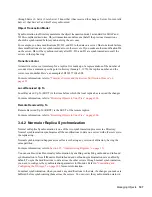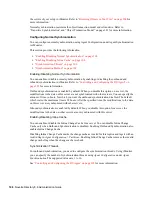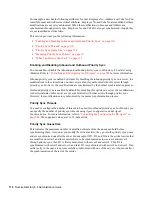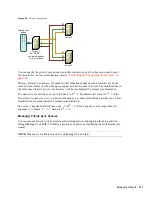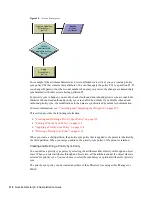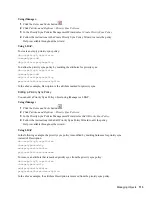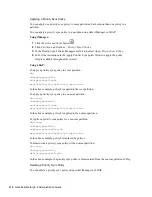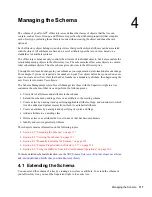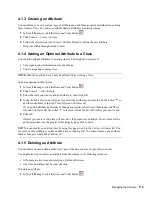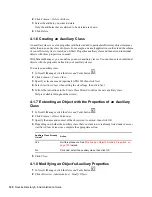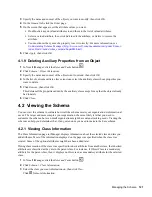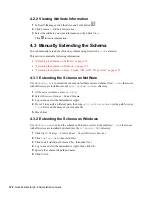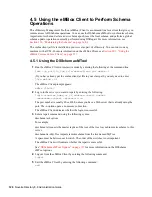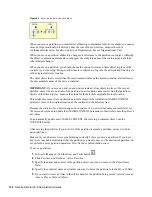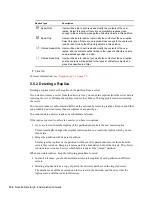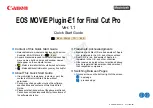
Managing the Schema
121
no
vd
ocx
(e
n)
6 Ap
ril 20
07
3
Specify the name and context of the object you want to modify, then click
OK
.
4
On the
General
tab, click the
Other
page.
5
On the screen that appears, set the attribute values you want.
Double-click any unvalued attributes to add them to the list of valued attributes.
Select a valued attribute, then click
Edit
to edit the attribute, or
Delete
to remove the
attribute.
You must know the syntax of a property to set it correctly. For more information, see
Understanding Schema Manager (http://www.novell.com/documentation/lg/ndsv8/docui/
index.html#../usnds/schm_enu/data/hnpkthb2.html)
.
6
Click
Apply
, then click
OK
.
4.1.9 Deleting Auxiliary Properties from an Object
1
In Novell iManager, click the
Roles and Tasks
button
.
2
Click
Schema
>
Object Extensions
.
3
Specify the name and context of the object want to extend, then click
OK
.
4
In the list of current auxiliary class extensions, select the auxiliary class whose properties you
want to delete.
5
Click
Remove
, then click
OK
.
This deletes all the properties added by the auxiliary class except for any that the object already
had innately.
6
Click
Close
.
4.2 Viewing the Schema
You can view the schema to evaluate how well the schema meets your organization’s informational
needs. The larger and more complex your organization, the more likely it is that you need to
customize the schema, but even small organizations might have unique tracking needs. Viewing the
schema can help you determine what, if any, extensions you need to make to the base schema.
4.2.1 Viewing Class Information
The Class Information page in iManager displays information about the selected class and lets you
add attributes. Most of the information displayed on the page was specified when the class was
created. Some of the optional attributes might have been added later.
During class creation, if the class was specified to inherit attributes from another class, the inherited
attributes are classified as they are in the parent class. For instance, if Object Class is a mandatory
attribute for the parent class, then it displays on this screen as a mandatory attribute for the selected
class.
1
In Novell iManager, click the
Roles and Tasks
button
.
2
Click
Schema
>
Class Information
.
3
Select the class you want information on, then click
View
.
Click for more information.
Summary of Contents for EDIRECTORY 8.8 SP2
Page 4: ...novdocx en 6 April 2007...
Page 116: ...116 Novell eDirectory 8 8 Administration Guide novdocx en 6 April 2007...
Page 128: ...128 Novell eDirectory 8 8 Administration Guide novdocx en 6 April 2007...
Page 255: ...256 Novell eDirectory 8 8 Administration Guide novdocx en 6 April 2007...
Page 406: ...408 Novell eDirectory 8 8 Administration Guide novdocx en 6 April 2007...
Page 563: ...566 Novell eDirectory 8 8 Administration Guide novdocx en 6 April 2007...
Page 573: ...576 Novell eDirectory 8 8 Administration Guide novdocx en 6 April 2007...
Page 601: ...604 Novell eDirectory 8 8 Administration Guide novdocx en 6 April 2007...

